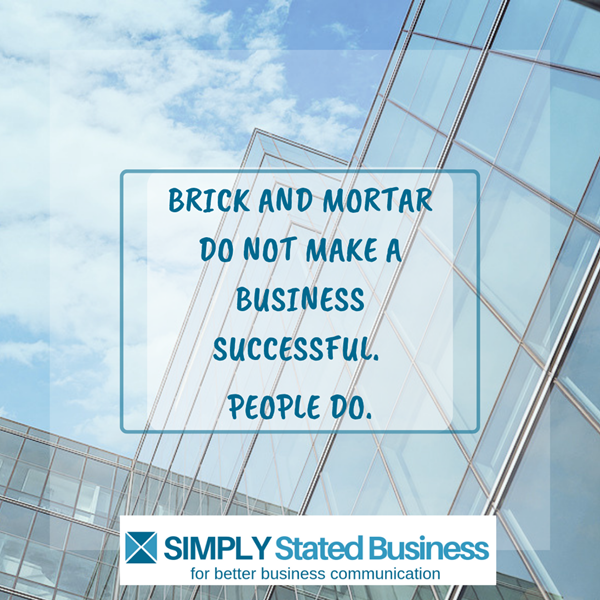 Would you slam a door in the face of a potential customer? How about an existing one?
Would you slam a door in the face of a potential customer? How about an existing one?
Of course, you wouldn’t. Yet unintended business communication actions may trigger less than welcoming business communication.
Learn how to replace those missteps with a welcome mat invitation through better business communication.
Welcoming Business Communication
A Content Marketing Study shows spending jumped nearly $20 billion in the last two years. That is a lot of business communication.
Even if you’re a small business owner with billions but a dream, business communication helps shape your destiny. So, the last thing you want to do is turn off your audience with less than welcoming business communication.
The following are three common missteps that may feel like a slammed door in the face of your customer.

1. The Unknown Caller
Remember the days of door-to-door sales? We still have them here in Idaho. Talk about a tough gig. More than a few were on the receiving end of a slammed door in the face.
Now picture a salesperson coming to your door with a bag over his head. Would you welcome him into your house?
Absurd notion, but communication missteps can bag information your customers would welcome.
Impersonal or Missing About Page
Think about the last time you landed on a site that piqued your interest. You want to know more about the business, so what do you do? You head to the About Us page.
But what if there isn’t one? Or the page is a long yawn-provoking history lesson, filled with pictures of buildings and statistical data. It is about as exciting as that paper bag.
- Readers want the face behind the business – not the face of the building.
- Site visitors want information that helps solve their problems (Hint: make it about your reader and how you can help).
- Impersonal or missing About pages place a bag over valuable information your reader wants.
Remove the bag. Design business communication that delivers the information customers want or need.

Contact Conundrum
Is there anything more frustrating than searching for contact information? You access a site and are met with the following.
- No contact form
- Not a phone number or email address
- Or any visible form of contact
A site with difficult-to-find contact information is as bad as having no contact information at all.
A few years ago, I purchased a wearable health tracker. But the device arrived with a faulty battery (and other issues). So, I went to the seller’s site.
- I could not find a customer service phone number, email, or online chat.
- Next, I looked for a ticket submission form. None found.
- I could find no way to contact them about my problem.
Instead, the site linked me to their Community Forum. That may help if all I wanted to do was whine but I do not think the “community” could fix a faulty device.
I ended up whining on Twitter to their support account. The representative sent a link to a support ticket form that I could never have found (and probably never will again).
Tip: I find Twitter support – if the business has one – to be much more responsive. I guess they don’t like being called out publicly.
Another Tip: Invest in business cards. They are an inexpensive and simple solution for sharing contact information when you are out.
 2. Language Barriers
2. Language Barriers
Language barriers come in all shapes and sizes (hey, just like customers). From simple to serious, the following are a few language barrier examples.
- Typos, bad grammar and format hinder understanding.
- Unexplained acronyms or technical terms confuse readers.
- Poorly translated (or not translated at all) content can backfire.
I love the funny translation stories. Some get a bit *ahem* embarrassing.
One G-rated version example
HSBC Bank launched an “Assume Nothing” marketing campaign, which they scrapped after discovering the overseas translation became “Do Nothing”.
Language barriers in your business communication are unwelcoming, leaving customers feeling like outsiders or very confused.
3. Unprofessional Behavior
I know what you are thinking. Who would be unprofessional to customers or potential customers? That would be like slamming a door in their face.
But consider this.
- You read a post on a social media platform.
- You completely disagree with the position of the person posting it.
- So, you blast them – a full-on rage-filled response.
What you don’t know is your ideal customer – your killer client – is reading your response.
- They remember that response when you come calling.
- It does not matter that your killer client agrees with your position.
- He or she hates the delivery. Oops.
My health care niche has plenty of passion (and opinions). One LinkedIn author asked those commenting to keep responses civil. And to respect the right of individual opinions. Sounds good, right?
Then he proceeded to direct words like “idiotic” and “stupid” to those who disagreed with his controversial post.
Um, kettle – black.
Demonstrating professional behavior - especially when you disagree - is welcoming, winning behavior. Share on XWelcoming Business Communication Wrap
How many of these issues have you bumped up against?
- Missing or hard-to-find contact information
- Technical terms you did not understand
- Unappreciated name-calling
Did the experience feel very welcoming?
- Channel that feeling.
- Ask customers what they want.
- Then deliver welcoming business communication.
What door-slamming missteps have you experienced in business communication? Share your stories in Comments.
==================================
==================================
Note: In 2015, SSB took a year-long alphabetic journey for better business communication. Each post contained an A-to-Z topic for creating better business communication. This ‘W’ post originally published on November 16, 2015, and this July 7, 2022 version updates it. The plan is to update each alphabetic post. Hopefully, it will not take a year to complete. 😊
===================================

All of the above… the missing contact info is my current complaint most often.
Mine, too, Anne. I almost hate the well-hidden contact info more than it not being there at all.
Very valuable information.
And, to add to that, it means when you DO call a potential customer (or client), your identity should match. It shouldn’t be a fake phone number- but one that matches your website. It shouldn’t be unidentified, but the listing for your corporate identity.
Because consistency – and a consistent image- is vital to win that customer to your side.
Good addition, Roy. I’d add, for sole proprietors, it’s important to keep the phone message professional. Since the age of smartphones/cell phones, we use non-landlines more often. We can’t expect callers to know what time zone we’re in so have a professional voicemail message and return calls promptly.